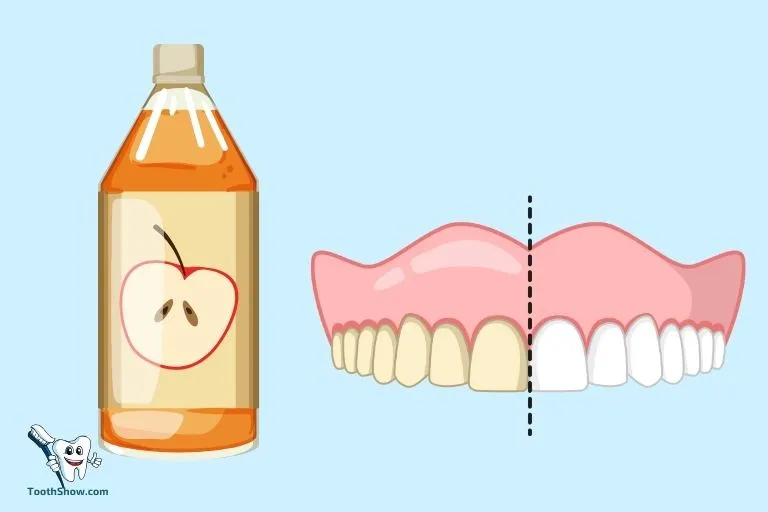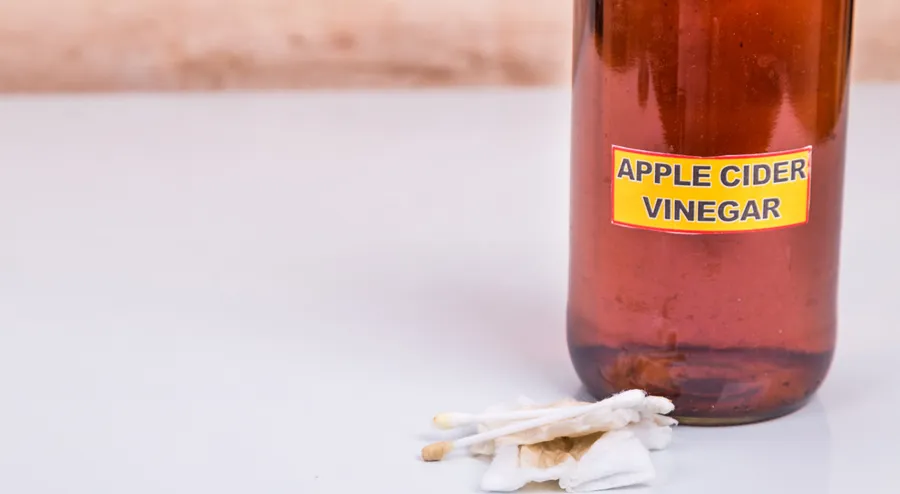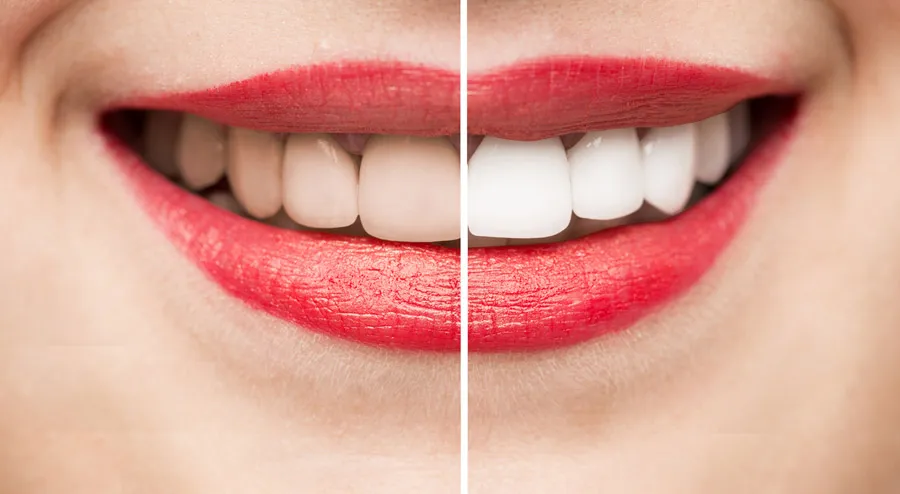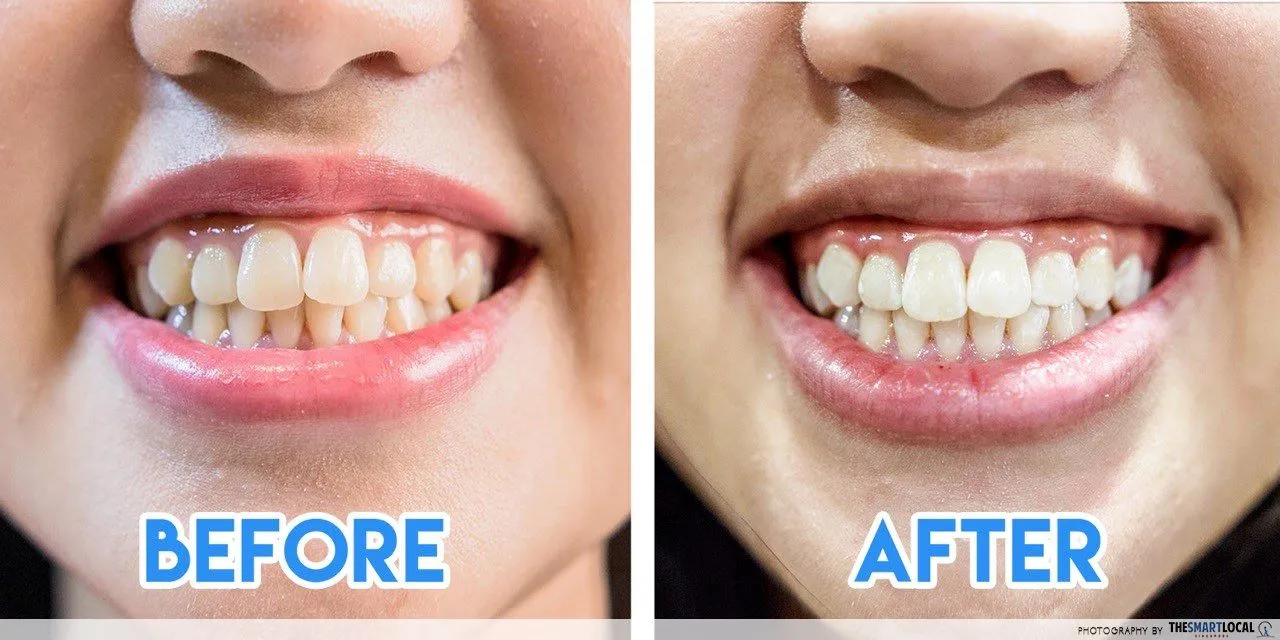Are you dreaming of a brighter, whiter smile? The quest for pearly whites has led many to explore various teeth whitening options, from expensive professional treatments to readily available over-the-counter products. Among the natural remedies gaining popularity is apple cider vinegar (ACV). This article delves into the world of ACV teeth whitening, exploring its benefits, the science behind its action, and the real-life before and after results you can expect. We’ll also guide you through a step-by-step process, discuss potential risks, and compare it with other teeth whitening methods to help you make an informed decision about achieving that radiant smile.
What is Apple Cider Vinegar and Its Benefits for Teeth Whitening
Apple cider vinegar is a type of vinegar made from fermented apple juice. It’s known for its tangy flavor and numerous health benefits, attributed to its acetic acid content. Acetic acid is the main active compound, contributing to ACV’s antibacterial and antifungal properties. In the context of teeth whitening, ACV is believed to help remove stains and discoloration from the enamel surface. Proponents suggest that it can break down plaque and tartar, leading to a cleaner and potentially whiter appearance. However, it’s essential to understand that the effectiveness and safety of ACV for teeth whitening are subjects of ongoing debate, and scientific evidence is limited compared to other methods.
How ACV Works on Teeth
The primary mechanism by which ACV is thought to whiten teeth is through its acidic nature. The acetic acid in ACV can potentially dissolve stains and debris that accumulate on the tooth surface. These stains can arise from consuming coffee, tea, wine, and other foods and beverages. ACV may also help to disrupt the biofilm of bacteria that forms plaque, contributing to a cleaner feeling in the mouth. It’s important to note that ACV doesn’t change the intrinsic color of your teeth. Instead, it aims to remove surface stains and restore the original shade of your enamel. However, this action also comes with potential risks that we will discuss in more detail later.
The Science Behind ACV and Tooth Stains

Tooth stains are typically categorized into two types intrinsic and extrinsic. Extrinsic stains are those that develop on the enamel surface, caused by pigments from food, drinks, and tobacco. ACV, as an acidic solution, may help in removing these extrinsic stains. The acid can break down the bonds that hold these pigments to the enamel. The effectiveness depends on the concentration of acetic acid, the duration of exposure, and the type and severity of the stains. The scientific community has not reached a consensus on the efficacy and safety of ACV for teeth whitening. Research is limited and often based on anecdotal evidence. Therefore, it’s crucial to approach this method with caution.
The Before & After: ACV Teeth Whitening Results
Many individuals who have used ACV for teeth whitening report varying degrees of success. Some claim noticeable improvements in the brightness of their teeth after regular use. The before and after results often depend on several factors, including the initial condition of the teeth, the type of stains present, and how consistently the ACV treatment is applied. It’s important to approach these anecdotal accounts with a critical eye, as individual results can vary significantly. While some may experience positive outcomes, others may see minimal or no change, and some may even encounter adverse effects. Always consider the potential risks.
Real-Life ACV Teeth Whitening Experiences
Real-life experiences with ACV teeth whitening are mixed. Some users share positive testimonials, highlighting how ACV helped remove surface stains and improve the overall appearance of their teeth. These individuals often report feeling more confident about their smiles and seeing a noticeable difference within a few weeks of consistent use. Others have experienced less dramatic results or have faced negative side effects, such as increased tooth sensitivity or minor enamel erosion. The effectiveness of ACV often depends on the individual’s oral health condition and the specific application method. Therefore, it’s crucial to take into account individual experiences and consider them in context.
Before & After Images & Stories

Before and after images and stories offer a visual representation of the potential outcomes of ACV teeth whitening. These visuals can be compelling, showing noticeable improvements in tooth brightness and stain removal. However, it’s crucial to be aware that these images may not always reflect the average experience. Factors such as lighting, photo editing, and individual variations in tooth structure can influence the perceived results. When evaluating before and after images, look for clear, unedited photographs with consistent lighting and consider multiple sources to get a balanced view of the potential outcomes. Always be realistic about the expectations and consult with a dentist for a professional opinion.
Factors Affecting Whitening Results
Several factors can influence the effectiveness of ACV teeth whitening. The type and severity of stains play a significant role. Surface stains caused by coffee, tea, and red wine are more likely to respond to ACV treatment than intrinsic stains, which originate from within the tooth structure. The initial condition of the teeth is another crucial factor. Individuals with existing dental issues, such as enamel erosion or tooth sensitivity, may experience adverse effects. Consistency in the application is also key; regular use, as recommended, often leads to better results. Furthermore, the concentration of ACV used and the application method can influence effectiveness. Diluting ACV with water is always recommended to reduce the risk of enamel erosion.
Step-by-Step Guide to ACV Teeth Whitening
If you choose to try ACV teeth whitening, it’s essential to follow a specific method to minimize risks and maximize potential benefits. Always consult with a dentist before starting any new teeth whitening regimen. Here’s a recommended step-by-step guide for using ACV for teeth whitening. Remember that caution and moderation are key, and discontinuing use if any adverse effects arise is crucial.
ACV Whitening Method

To prepare, use raw, unfiltered ACV. This type contains the ‘mother,’ a cloudy substance with beneficial enzymes and proteins. Mix one part ACV with two parts water. This dilution helps reduce the acidity and minimizes the risk of enamel erosion. Before applying the mixture, brush your teeth thoroughly to remove any food particles and debris. It’s essential to start with a clean surface to allow the ACV to work more effectively. Make sure you use a soft-bristled toothbrush to avoid damaging your enamel.
Application Technique
Dip your toothbrush into the diluted ACV solution. Gently brush your teeth for about one minute, focusing on all surfaces of each tooth. Avoid applying excessive pressure to prevent enamel abrasion. After brushing with the ACV mixture, rinse your mouth thoroughly with water. This helps to remove any remaining acid and prevent prolonged exposure. Brush your teeth again with regular toothpaste to neutralize any residual acid and remineralize your enamel. This final step is crucial for protecting your teeth.
Frequency and Duration
It is recommended to use ACV for teeth whitening no more than once or twice a week. Frequent use can increase the risk of enamel erosion and tooth sensitivity. Start with a trial period of a few weeks to assess your teeth’s reaction. Monitor your teeth for any signs of sensitivity or damage. If you experience any adverse effects, discontinue use immediately and consult a dentist. The ideal duration for each application is generally one minute. Prolonged exposure to the acidic solution can increase the risk of enamel damage. Always listen to your body and stop the treatment if you experience any discomfort.
Potential Risks and Side Effects of ACV Teeth Whitening

While ACV is considered a natural remedy, it’s essential to be aware of the potential risks and side effects associated with its use for teeth whitening. The acidic nature of ACV can be detrimental to your enamel. Over time, this can lead to enamel erosion, making your teeth more susceptible to cavities and sensitivity. It is always recommended to consult with a dentist before trying this method.
Tooth Sensitivity
Increased tooth sensitivity is a common side effect. As the enamel erodes, the underlying dentin becomes exposed, leading to sensitivity to hot, cold, and sweet foods and drinks. If you experience increased sensitivity while using ACV for teeth whitening, it is essential to stop the treatment immediately. Consult your dentist for advice on managing tooth sensitivity. Using toothpaste designed for sensitive teeth can offer relief, but it’s crucial to address the root cause of the sensitivity.
Enamel Erosion
Enamel erosion is one of the most serious risks associated with using ACV for teeth whitening. The acid in ACV can gradually wear away the protective enamel layer of your teeth, making them more vulnerable to decay, cavities, and discoloration. Enamel erosion is irreversible, and restoring the enamel often requires professional dental intervention, such as fillings or veneers. If you notice any signs of enamel erosion, like increased transparency, roughness, or changes in the shape of your teeth, discontinue using ACV and seek dental advice.
ACV Teeth Whitening Alternatives

If you’re looking to whiten your teeth, there are several safer and more effective alternatives to using ACV. Consulting your dentist is always the best first step in determining the best approach for your teeth. Professional treatments, such as in-office whitening and take-home whitening kits, offer a reliable way to achieve a brighter smile. In addition to these options, various other natural methods may provide some benefits. It’s essential to weigh the pros and cons of each method and choose the one that best suits your oral health needs.
Other Natural Whitening Methods
Several natural methods can help improve the appearance of your teeth. Baking soda can act as a mild abrasive, helping to remove surface stains. However, like ACV, it should be used with caution and moderation to avoid enamel damage. Coconut oil pulling is another popular method, believed to reduce bacteria and improve oral hygiene. While these methods are considered gentler than ACV, they may not produce dramatic whitening results, and their effectiveness varies. Before trying any natural method, it is always advisable to consult with your dentist.
Professional Teeth Whitening
Professional teeth whitening offers the most effective and safest way to achieve a brighter smile. In-office whitening procedures, performed by a dentist, use a high-concentration bleaching agent to lighten the teeth significantly. These treatments are fast, efficient, and often provide immediate results. Your dentist can also offer take-home whitening kits with custom-fitted trays and professional-strength bleaching agents, providing a more gradual approach. These professional methods are generally considered safe when performed under the supervision of a dentist and are far more reliable than DIY methods like ACV. Regular checkups and cleanings are also very important for maintaining a bright and healthy smile.
Conclusion

While apple cider vinegar has gained popularity as a natural teeth whitening remedy, it’s crucial to approach this method with caution. The acidic nature of ACV can potentially damage your tooth enamel, leading to increased sensitivity and long-term dental issues. While some individuals may experience some improvement in tooth brightness, the scientific evidence supporting its efficacy is limited, and the risks outweigh the potential benefits for many. If you’re seeking a brighter smile, consulting a dentist for professional whitening options is always the safest and most effective approach. Professional treatments offer reliable results and are designed to minimize the risk of damage to your teeth and gums. Remember, prioritizing your oral health is paramount, and consulting with a dental professional is always the best way to ensure a healthy and radiant smile.
